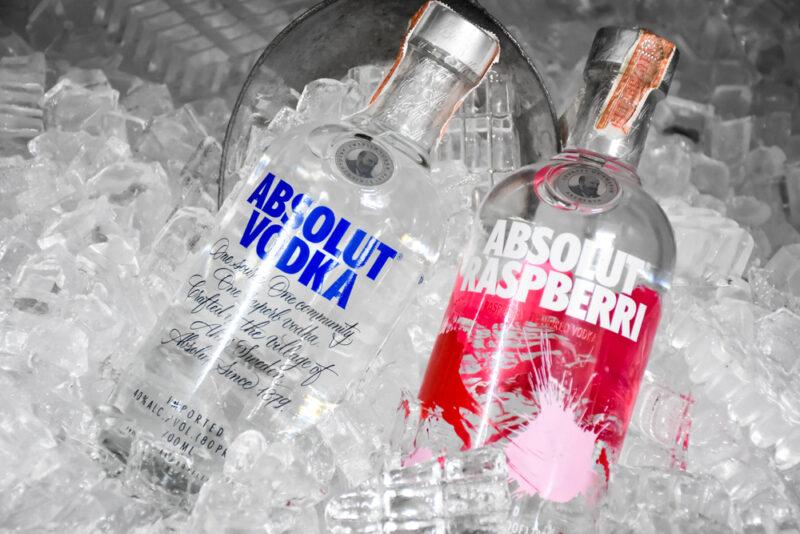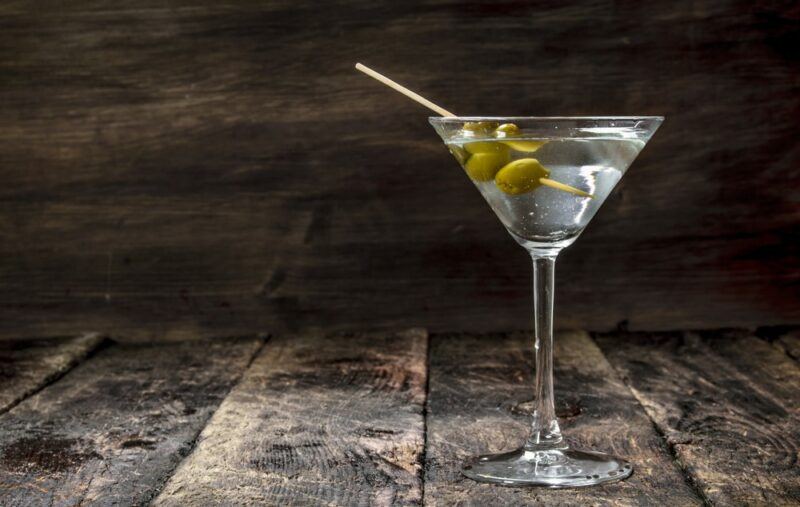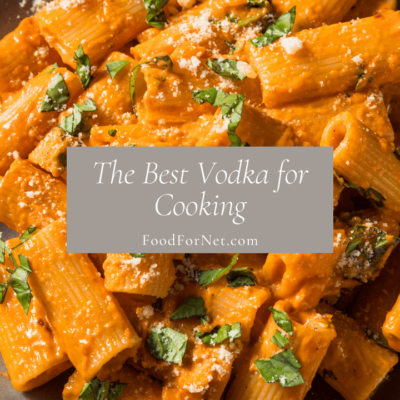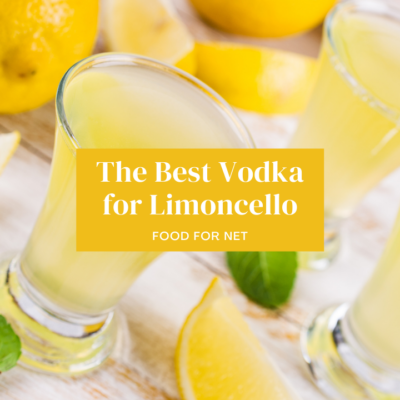
The question, “What is vodka made from” requires a bit more nuance than many other types of spirits. Whiskey, tequila, and rum all have specific requirements about the ingredients they use and what they’re made from. Vodka, not so much.
For a long time, the American definition simply focused on vodka being a neutral spirit that’s typically distilled without distinctive character, with alcohol by volume (ABV) of at least 40%.
Since 2020, the legal definition has changed to focus on the amount of sugar and critic acid present in vodka, and also includes other requirements. The idea that it must be without distinctive character has been dropped, giving distillers greater opportunities to experiment with the flavor of their vodka.
None of that addresses the pertinent question – what is vodka made from? The simplest answer to that question is, almost anything, including grains, potatoes, fruits, vegetables, and more obscure additions. This is because vodka can simply be produced from any type of food that contains starch or sugar.
There’s such a variety because vodka doesn’t take on many flavor tones from the source ingredient. That’s kind of the point. The neutral taste of vodka is also why it is excellent in so many cocktails.
In this post, we’ll take a close look at the different potential ingredients and how they’re used, along with the processes of making vodka and how to choose between vodka brands.
What Vodka Is Made From?
How Is Vodka Made?

Vodka production relies first on fermentation, such as the fermentation of grains, potatoes, or some other source of sugar. This is achieved by combining the source ingredient with water, creating a pulp, and then adding yeast. The yeast is responsible for the fermentation process by converting sugars into alcohol.
However, fermentation isn’t enough on its own, as the approach just gives an alcohol content of around 16%. As a result, distillation steps are needed. This involves heating the liquid in a still, where the alcohol evaporates and can be separated, captured, and condensed.
Progressive distillation steps increase the alcohol content of the liquid and purify it in the process. Vodka is typically distilled at least three times, although some products go through many more distillation steps.
Companies may then dilute their vodka to create the desired ABV, then bottle and brand it.
Some products may also be filtered or demineralized. This is particularly important if the water was relatively low quality – otherwise, the vodka could become cloudy.
Filtering can be conducted through a range of materials, including quartz crystals and charcoal. This choice of filters influences the flavor profile of the vodka, along with other characteristics.
Vodka Is Made From 4 Main Types Of Base Starch
Vodka is simply made using a source of sugar or starch, plus water, yeast, and occasionally other ingredients. This means we need to focus on the source of starch, as this is the biggest difference between the various vodka brands.
1. Grains
Modern vodka often uses a fermented grain as the base ingredient. Wheat and rye are considered particularly high quality, although other grains can easily be used instead.
Most of the time just one type of grain is used to make the vodka. However, some companies do use two types of grain instead, such as a combination of wheat and rye.
2. Potatoes
Potatoes are one of the most classic vodka ingredients, particularly for Polish and Russian vodka. Potatoes were once used because it was much cheaper to make vodka this way instead of using grains.
The equation has since shifted and potato vodka is actually more expensive to make than grain-based vodka. However, some companies still make potato vodka and do so particularly well.
Potato vodka is interesting. It tends to have a fuller mouthfeel than other types of vodka and even includes some earthy and nutty notes. These differences make potato vodkas excellent for sipping or for inclusion in some simple cocktails.
But, the stronger flavor of potato vodka means that it’s not such a good fit in full cocktails. You may find that the potato-specific flavors mess with the taste of the rest of the cocktail.
3. Corn
Corn is another interesting vodka ingredient. It’s not as common as other grains, but some companies use it regularly. Corn adds a subtle sweetness to the vodka that can be appealing.
There is some controversy though, as corn is often genetically modified in the United States. While genetically modified crops have been researched extensively for safety, there’s still a lot we don’t know. Many people feel better if they avoid genetically modified foods, which could include giving corn-based vodka a miss.
4. Fruit
Some products focus on using fruit as the base for the vodka instead, such as apples or grapes. Don’t expect a product like apple cider or wine though – the distillation process means that vodka retains few characteristics from the base ingredients.
Of course, vodka isn’t just limited to apples and grapes. Any type of fruit could be used as the base source of sugar.
Bonus: Unusual Vodka Ingredients

It’s sometimes said that vodka is either made from a grain, a fruit, or potatoes. But, that’s not entirely true. Some companies experiment with other base ingredients instead, including some that are truly unexpected.
A great example is FAIR Quinoa Vodka, which truly does rely on quinoa. It is an organic product with Fair Trade certification and has won multiple awards.
There are also vodkas made using maple sap, honeycomb, hempseed, coffee pulp, and whey. That’s just a handful of examples. Companies are regularly experimenting with new products and materials, so we’re likely to see more unusual vodka ingredients as time goes on.
Video: How Vodka Is Made
Other Vodka Ingredients
Water
Along with the source of starch, vodka also relies on water. The water chosen makes a surprising difference, as purer water makes the nuances of the vodka much more evident. This is why many high quality vodka brands focus on artisanal water, such as water sourced from glaciers or deep springs.
This effect also means that the ice you use in a cocktail has an impact on the final flavor of your drink. This is particularly relevant if you’re drinking vodka slowly.
You may also want to make ice using filtered water, rather than water from the tap. This way the ice in your drink doesn’t overwhelm the nuances of your vodka.
Additives
While vodka is often seen as a pure spirit, this isn’t always the case. Instead, many countries allow companies to include safe additives to improve the mouthfeel or flavor of the product. Common additives include citric acid, glycerine, and honey, although there are plenty of other potential additives.
Vodka produced in the United States, for example, may consist of up to 2.5% of additives by volume, as long as the additives as Generally Recognized as Safe (GRAS). Thankfully, these practices aren’t universal. Some brands intentionally steer away from additives and produce pure vodka products instead.
If you’re trying to avoid additives, try an organic vodka brand. These products should all be naturally free from additives, while also relying on natural and organically produced ingredients.
Extra Flavoring Ingredients

Vodka is traditionally almost flavorless, with only slight differences in taste and mouthfeel from one product to the next. Flavored vodkas are an entirely different story. These are now produced by many companies, such as Skyy, Smirnoff, and Absolut, and there are countless flavors to choose from.
A small selection of such flavors includes the following:
- Raspberry
- Pomegranate
- Huckleberry
- Citrus
- Grapefruit and rose
- Vanilla
- Chocolate
- Marshmallow
- S’mores
- Pineapple
At this point, it’s hard to find flavors that aren’t represented in vodka.
Some companies, particularly artisanal ones, rely on natural ingredients for their flavoring. This can include mashing up the whole fruit and adding it to the vodka, then distilling. Other ingredients, like spices, may be left to infuse for a time, then removed.
Larger companies often rely on natural and artificial flavors instead. These give them more flexibility with taste and make it easier to scale their production. Of course, vodkas that rely on additives often don’t taste as good as those made with natural ingredients.
Different Types of Vodka

Vodka can be categorized in many different ways, such as by focusing on the base source of starch, where it was produced, or how it was produced. Instead of attempting to feature all categories here, we’re going to highlight some of the most interesting ones.
Organic Vodka
Organic vodka is produced using organic ingredients. In the United States, the company must meet USDA requirements for organic certification, which also means avoiding GMOs and many additives.
Definitions of organic vary between countries, which can lead to variations in how the vodka can be made.
Artisanal Vodka
Artisanal vodka isn’t a regulated term, but generally refers to small-batch vodka that relies on traditional production methods and has a strong emphasis on quality. Artisan producers often lean into flavor nuances, trying to create vodka with a distinctive flavor profile.
These are the cases where you’ll see the more unusual ingredients, such as honeycomb or quinoa.
Bulk Produced Vodka
Vodka in the United States often relies on mass production, where 95% pure grain alcohol is first produced by large companies, like Midwest Grain Products. Vodka companies buy this initial pure grain alcohol, then filter, dilute, and market the product.
This means that many vodka brands rely on the same base spirit and may not be that different from one another. The pattern is frustrating, as some products may be priced much higher than others, even when they are essentially the same.
The pattern isn’t limited to the United States either. It sometimes occurs in Europe as well and perhaps in other parts of the world.
Which Vodka Is Best?

With so many vodka expressions, how do you ever decide which type to drink?
Much of the answer comes down to personal preference. Some people will prefer robust traditional vodkas, ones that give the raw ingredients a chance to shine. Others may lean towards Western vodkas, which are often mellower and easier to enjoy.
Your budget and how you’re using the vodka will be relevant too, as can be seen in the following situations.
- For Cocktails. Vodka cocktails typically bury most nuances of your vodka, so a top shelf vodka brand is just a waste here. You can focus on a relatively inexpensive product or even look for flavored vodka instead.
- For Sipping. Sipping your vodka gives you the chance to experience the different flavors and nuances, so it’s worth spending a little more to find a decent product. The best sipping vodka comes from companies that aren’t trying for a purely neutral experience, particularly those that experiment with unusual ingredients.
- For Cooking. Resist the temptation to use ultra-cheap vodka in your cooking, as this can bring a slight harshness to your meal. Mid-range vodka tends to work best
- For Infusing. Infusing allows you to make your own flavored vodka, giving you plenty of flexibility. Here, you’ll want vodka that’s as neutral as possible, such as Ketal One Vodka or unflavored Skyy Vodka.
- For a Martini. Classic vodka martinis feature just two ingredients – vodka and vermouth. As a result, the vodka you choose will make a huge difference. You don’t need to choose top shelf vodka for martinis, but try to avoid anything low quality.
Related Content
Frequently Asked Questions
Is Vodka Gluten Free?
Because of the distillation process, even vodka made using wheat ends up being gluten free. However, flavored vodka may sometimes contain gluten due to the added ingredients. So, it’s important to always check the ingredients label.
Is Top Shelf Vodka Better?
More expensive products are often made using higher quality ingredients and carefully sourced water. However, the resulting vodka doesn’t necessarily taste better or come with a lower hangover risk. In the end, the best vodka is the one that matches your palate, preferences, and budget.
Is Highly Distilled Vodka Superior?
While vodka only needs to be distilled three times, some companies go to ten distillations or even more. These extra distillations can actually be counterproductive, as they remove many of the characteristic features from the vodka.
Does Vodka Always Taste The Same?
While vodka is a neutral spirit, the expressions don’t all taste the same. There are subtle variations in the flavor and texture of vodka. This is many people have favored expressions, along with others they’re not so fond of.
In fact, the Alcohol and Tobacco Tax and Trade Bureau recently changed the rules surrounding vodka, creating a less ambiguous definition that allows for more flavor and character in vodka.
Is Everclear Vodka?
Everclear is generally classified as a rectified spirit or a neutral grain spirit, rather than a type of vodka. That said, the two spirits are very similar. The biggest difference between them is the alcohol content, as vodka often has an ABV of around 40%, while Everclear can be 90% or above.

















 Top 21 Picnic Foods For A Date Plus Tips on How to Have the Perfect Picnic
Top 21 Picnic Foods For A Date Plus Tips on How to Have the Perfect Picnic
Leave a Reply